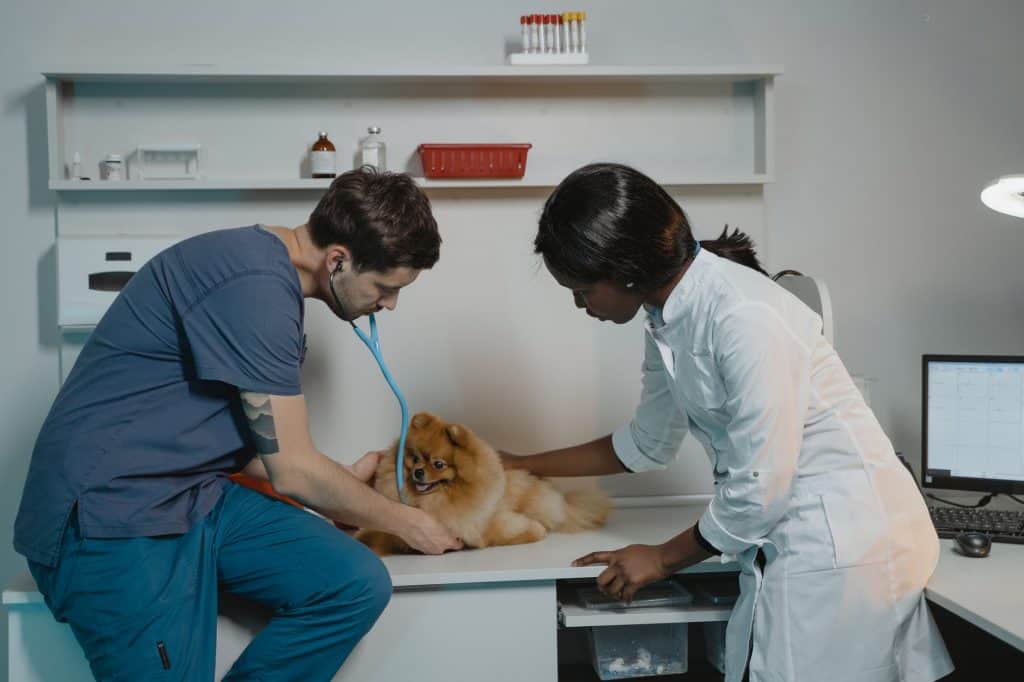“This post contains affiliate links, and I will be compensated if you make a purchase after clicking on my links.”
Rehabilitation for injuries comes in a number of different forms and even has different names. “Physio” has become a catch-all name for pet rehabilitation therapy.
In this guide, we’re looking at the power of these different types of therapy, and how they can provide a lot of help for your pet.

What Can Rehabilitation Therapy Help With?
A lot of us think of rehabilitation as recovery, but it can be helpful for pretty much any pet. That “recovery” might be after an operation and a long period of immobility, or it could just be to solve some health problems with a pet such as weight gain. If a pet is overweight then some types of therapy can be of help.
Rehabilitation therapy can help pets to become more flexible, and stave off the impacts of some diseases and long-term conditions.
There are a lot of other benefits, such as improving blood flow, and it can even build muscle and make a pet more hardy and likely to avoid injuries through daily wear and tear.
Knowing when to visit pet rehabilitation specialist therapists is difficult sometimes, but a consultation with a vet will tell you whether or not it might be a way to help your four-legged friend.
What Are Some of the Rehabilitation Treatments Your Pet Might Have?
There are many different types of treatment that can make up your pet’s treatment. Many of these require specialist knowledge, but others can be something you can implement with the help of your pet therapist.

Types of Pet Rehabilitation Therapies
A good rehabilitation program will usually be made out of multiple different treatments. We’ve listed some of the types of pet rehabilitation therapies below. One or all of these might be suitable for your pet.
Manual Therapies
Yes, your pet can get a massage just like you can! This is one of the most popular types of manual therapies that your pet might be subjected to as a part of their therapy.
Massage, or trigger point release techniques, can help with a pet’s pain after an injury. They can also help with muscle stiffness as your pet might “activation”.
If a pet experiences muscle spasms and swelling, massage and trigger point release can be very effective treatments.
Exercise Programs
An exercise program for a pet can be really helpful, but it can also be pretty complicated to implement. If you aren’t a pet trainer, this can be even more difficult.
It isn’t as simple as just letting your pet run around. There might be certain guided exercises that will have the maximum benefit from your pet. A therapist may even look to retrain a pet’s gait so that they walk in a way that is more conducive to their health.
An exercise program will probably need your cooperation, but you can’t do it alone, so a rehabilitation specialist may be needed to create a plan for your pet and specific exercises that target pain, or a specific condition.
Electro Therapies
It really can feel like you’re living in a science fiction film if you delve into medical science these days. That includes pets!
Electrotherapy isn’t something to try without the help of a professional, it is a cellular treatment that can help with swelling, aid healing and even make scars heal better. A tens machine can also be used to relieve pain.
Different types of therapy are suitable for pets in different scenarios. Low level lasers, ultrasounds and types of electromagnetic energy can be used in certain situations to help your pet to recover from an injury or for pain relief.
Hydrotherapy and Other Complementary Treatments
A lot of people have woken up to the fact that hydrotherapy (using water) can be a fantastic treatment for pets, too.
Hydrotherapy is particularly beneficial to joints, so if a pet is suffering from arthritis or other joint conditions that make movement difficult, exercising in the water (swimming or walking in shallow pools) can be a helpful way to regain the full movement of their joints.
Pet rehabilitation therapy comes in many forms. There’s a chance it might be included in your pet insurance plan. If your pet is suffering from any physical ailment, it might be worth considering.
About the Author: John Green has profound experience in the veterinary field with years of experience. Now he handles content at Pet Health Hospital. In fact, John pays close attention to sharing vital information about pets to most pet parents across the United States. Certainly, John loves and cherishes animals, and owns two dogs Marty and Lou.


















